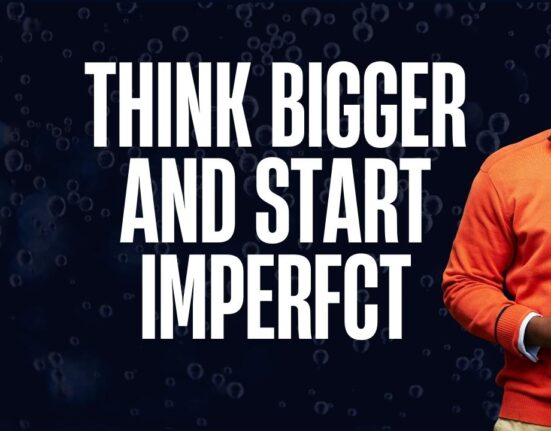No company is an Island. It’s hard to be an island (Although it’s doable) in the highly competitive business landscape. That’s why collaborative marketing is a go-to for many businesses.
Forming strategic partnerships and collaborations can significantly boost your marketing efforts. By combining resources and expertise with another company, you can reach new audiences, provide more value, and increase brand awareness.
Let’s explore the benefits of collaboration in marketing and how to make it work for your business.
What Is Collaborative Marketing?
Collaborative marketing—also known as co-branding— is the process of bringing two or more businesses with similar goals together. These like-minded business partners align their interests, set goals, and share resources and data to increase brand awareness, product/service awareness, leads, and sales.
Why You Need Partnerships in Marketing
Consumers today have more choices than ever before, especially with the rise of social media and digital marketing. Breaking through the noise to capture their attention is a constant challenge.
Partnerships allow you to leverage another brand’s audience and resources to improve your marketing outcomes.
Rather than viewing other businesses as competitors, many companies now look for potential allies. Partnerships give both parties access to new markets and opportunities. By combining your strengths, collaborative marketing helps you accomplish more together than you could alone.
Read: How To Become a Good Leader in Your Business
6 Benefits of Teaming Up for Marketing
Teaming up with another brand on marketing initiatives offers many advantages over doing it alone.
Here are some key benefits of collaborative marketing:
1. Expanded Reach
When two companies decide to collaborate and partner together, this means that each company can reach the other’s customers and followers.
For example, Company A can market to all of Company B’s customer email list, social media followers, blog readers, etc. And Company B can do the same with Company A’s audiences. This greatly expands how many new people they can expose their campaigns and content to.
2. Shared Expertise
Every company is better in some marketing skills and weaker in others. One company might be really good at social media ads, while another company makes great videos. When the two companies collaborate, they can share their expertise in the areas they are strong in.
For example, a company that uses videos in its campaign can help a company that is proficient in social media marketing make better videos. In the same way, the company that uses social media can help the other company reach more customers online.
3. Saves Cost
When two companies work together on marketing, they can split the cost of big projects—for example, running a TV ad, building a trade show booth, or developing an e-book.
Since the costs are shared, each company pays less than they would on their own. This saves marketing dollars.
4. Credibility
When a well-known, respected company partners with a lesser-known company, it makes the lesser-known company look better to customers. People think, “If that major company is working with them, they must be good.” It’s like a popularity boost.
5. Innovation
With two companies’ marketing teams collaborating, there are more people contributing ideas. With more perspectives, they can come up with creative marketing tactics that build on the strengths of both companies. Fresh thinking leads to innovation.
Read: Innovation is a Must for Business Success, Says Amazon AWS Exec
6. Differentiation
When companies co-develop products and content, it’s something unique that other competitors don’t offer. This differentiation makes them stand out from other brands in the marketplace. Customers see their offers as something new and different.
The combined marketing capabilities of two collaborative partners can outpace what either could accomplish on their own. It’s a case where 1 + 1 = 3.
Types of Collaborative Marketing
If you’re considering a marketing collaboration, there are a few proven partnership frameworks to consider:
Co-Marketing Campaigns
Co-marketing campaigns involve two or more brands coordinating their marketing efforts and pooling resources to promote a product, service, or event. The goal is to reach a wider audience by combining their customer bases, social media followers, email lists, and other assets.
Some examples of joint campaigns include:
- Social media cross-promotion through takeovers, contests, influencer partnerships, etc. (e.g., Spotify and Uber’s coordinated playlists and ride discounts)
- Co-branded content like blogs, videos, webinars, and whitepapers that are published on both brands’ sites. (e.g., IKEA and Airbnb’s “How to Adult” videos)
- Joint advertising through display ads, radio spots, direct mail, or other channels. (e.g., Target and Best Buy retargeting each other’s site visitors)
- Participation in events, trade shows, and experiences hosted or sponsored by your partner brand. (e.g., Sephora and Spotify’s Rihanna Fenty Beauty Fan Experience)
- Creation of complementary products or bundles that benefit both customer bases. (e.g., Uniqlo’s capsule collections with Disney and MoMA)
Affiliate Marketing Partnerships
Affiliate marketing involves partnering with individuals or companies who promote your products or services on their platforms and receive a commission for each resulting sale or conversion.
The affiliate model works well for:
- Promoting products relevant to your niche through influencers and bloggers. (e.g., influencers on Instagram and YouTube)
- Cross-selling complementary products to each other’s customer bases.
- Tapping into established communities and publishers to find new customers. (e.g., Amazon Associates, Apple Affiliate Program)
Affiliate partnerships can help expand your reach exponentially by incentivizing others to promote you.
Strategic Alliances
A strategic alliance is a long-term partnership between brands wanting to achieve larger shared goals.
This means two brands decide to team up and work together long into the future – like 5, 10, or even 20 years together. They do this because they each have big goals that they couldn’t get on their own.
By partnering up long-term, the brands can combine their skills, customers, resources, and strengths. This makes them able to accomplish much bigger things together—things that could take a longer time to accomplish.
A strategic alliance may include:
- Joint product development and integrated solutions that provide value neither brand could offer alone. (e.g., Starbucks and Barnes & Noble cafes in stores)
- Reciprocal referral programs and bundling of complementary offerings.
- Co-branded brick-and-mortar stores, events, or experiential activations. (e.g., Ulta Beauty shops inside Target stores)
- Integration of loyalty programs, CRM systems, and data analytics. (e.g., United and American airline partnerships)
Strategic alliances require more commitment but offer opportunities neither partner could capitalize on independently. The combined scale and synergy create mutual benefits.
Successful Collaborations Between Sales and Marketing Teams
For partnerships to work, there needs to be collaboration between the sales and marketing teams of both companies.
Salespeople often have key insights into customers’ needs and preferences that marketers lack. By working together, sales and marketing can align their messaging, promote suitable offerings, and ultimately drive more revenue.
Some ways sales and marketing can work together for effective co-marketing include:
Developing Buyer Personas
Sales and marketing collaboration involves developing buyer personas and target account profiles jointly so marketing campaigns hit the right audience.
Here’s how it works:
- The sales team talks to customers all the time. They can share what types of customers buy their products and what motivates them to buy.
- Marketing uses this info to create fictional characters called buyer personas that represent their target customers.
- By working together, sales and marketing teams make sure they really understand who their campaigns need to reach.
Sharing Insights From Successful Sales Calls and Market Tactics
Sales and marketing teams can share insights from successful sales calls, client meetings, and strategies to inform new marketing strategies.
It looks something like this: When sales are on calls with potential new clients, they learn helpful stuff like why the client might need the product or what objections they have.
Sales can pass this info to marketing to help make better YouTube videos, social posts, and websites that address customer needs.
On the other hand, marketing leads can share past successful campaigns and data that can help them come up with a better and more impactful marketing plan.
Creating Co-branded Marketing Assets
By creating co-branded assets and campaigns that salespeople and marketing teams can use to get buy-in from prospects
Marketing can create materials like sales decks and product brochures that have both the sales brand’s and marketing brand’s names on them. Sales can use these assets that prospective customers recognize to help convince them to buy.
Ensuring Consistency
The sales and marketing teams can do this by coordinating messaging across marketing activities and sales materials to ensure consistency.
Marketing and Sales need to say the same thing about the product when talking to customers. By working together, they can align their messages everywhere – websites, presentations, ads, etc.
Developing Sales Enablement Programs and Offers
Developing referral programs and shared sales enablement tools helps to facilitate leads and promote sales.
Marketing and Sales can build a process to hand off leads from one team to the other, like when a website visitor becomes a sales lead. Tools and referral programs help make handoff lead generation smooth.
Analyzing and Improving Campaign Results
Sales and marketing teams can analyze campaign results together and optimize them based on both sales and marketing input.
Marketing looks at campaign stats like website visits. Sales look at the number of sales made. Together, they can see what’s working and not working. And change campaigns to get better results.
With sales and marketing collaborating internally and with outside partners, you get a complete view of the customer journey. This alignment delivers a consistent experience and nurtures prospects into happy customers.
6 Easy Tips for Successful Collaborative Marketing
While collaborative marketing opens up many exciting opportunities, it also comes with some challenges.
Here are some tips for setting up win-win partnerships:
1. Look for shared target audiences and complementary offerings
The best partnerships are when each brand brings unique strengths and audiences to the table. There should be strategic alignment on goals and minimal overlap between partners.
2. Start small, demonstrate results –
Don’t commit to expansive partnerships right away. Start with small campaigns and test what resonates before increasing investment. Use data and results to guide the relationship.
3. Define roles and responsibilities –
Having clear roles and processes ensures effective execution and avoids misunderstandings. Develop guidelines for decision-making, reporting, and handling setbacks.
4. Keep sales teams aligned
Make sure both partners’ sales teams are kept informed about joint marketing activities and equipped to make the most of them. Misaligned sales efforts could undermine campaigns’ success.
5. Protect brand integrity
While collaborating, make sure both brands’ unique identities and reputations aren’t diluted. Campaigns should focus on complementing, not confusing, brand positioning.
6. Track analytics
Define shared metrics and reporting processes to monitor campaign performance. Analytics help identify what’s working so you can double down on success.
FAQ About Collaborative Marketing
Here are answers to some frequently asked questions about partnering with other brands on marketing:
Collaborative marketing is when two or more businesses or brands work together toward a common goal. Usually this means increasing brand awareness, product/service awareness, hitting sales goals, generating leads, and growing both businesses simultaneously.
Collaborative marketing has been called different names; some include co-branding, co-marketing, and partnership marketing.
Brands that make good partners are usually those in complementary industries with similar target customers but non-competitive product offerings. For example, a software company could partner with a managed IT services provider. Or a furniture maker could partner with an interior design marketplace.
Start by identifying brands you admire with audiences relevant to yours. Do your research to craft a customized pitch about how you could collaborate to mutual benefit. Offer data-backed proof points on how you could help them achieve goals.
A co-marketing agreement should define campaign details, investment, and resources from each party, performance metrics, reporting, length of the partnership, intellectual property usage, branding guidelines, legal liability, and exit clauses.
Key performance indicators depend on campaign details but could include exposure metrics, engagement, conversions, referral traffic and sales, cost per acquisition, and CLV of joint customers. Analyze both individual and aggregate results.
Yes, it can. Especially when one or more parties are not sharing important information related to the campaign they are working on. Also, brands may not want to share anything that compromises their competitive advantage or reveals proprietary information that could help partners beat them, especially at the end of such collaboration.
Conclusion
In our interconnected marketplace, brands can no longer afford to go it alone all the time. Collaborative marketing opens doors to new audiences, capabilities, and innovation. By combining strengths with non-competitive partners, you can break through the noise, differentiate your brand, and achieve strategic goals beyond what you could solo.
Do you have any existing partnerships amplifying your marketing efforts? What collaborative opportunities could your brand be exploring? The potential is there – it just takes finding the right partner and structuring a mutually beneficial arrangement.
Related Posts:












